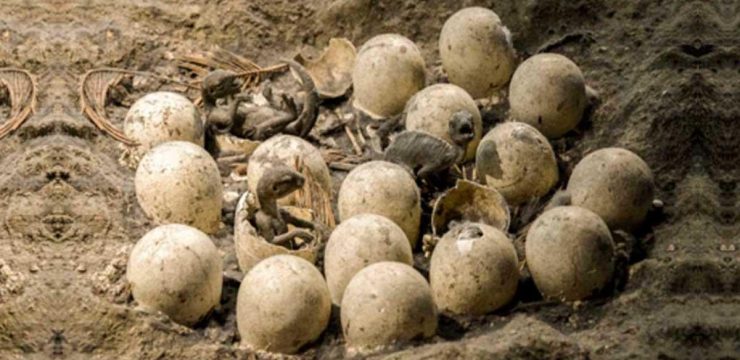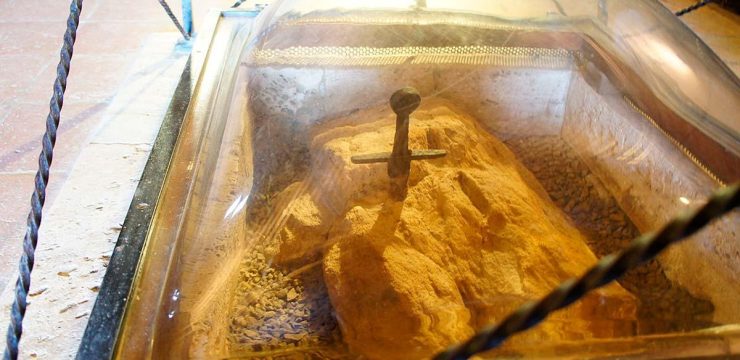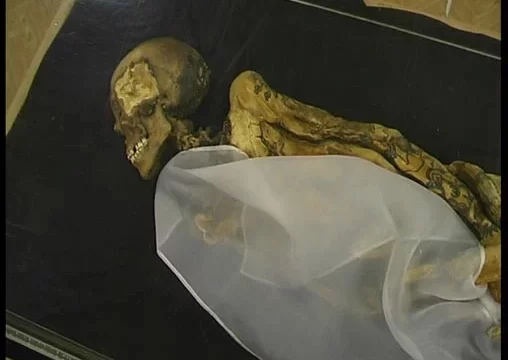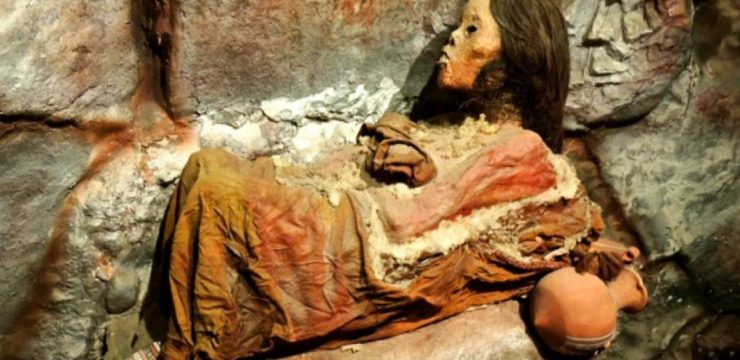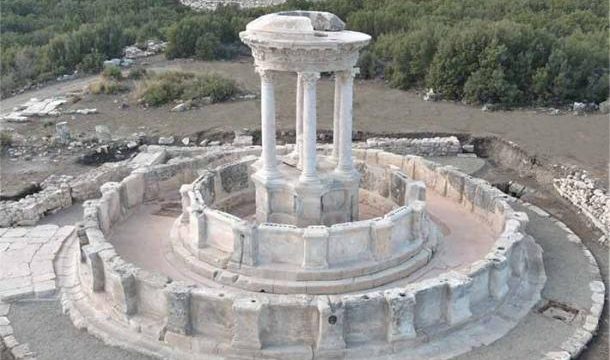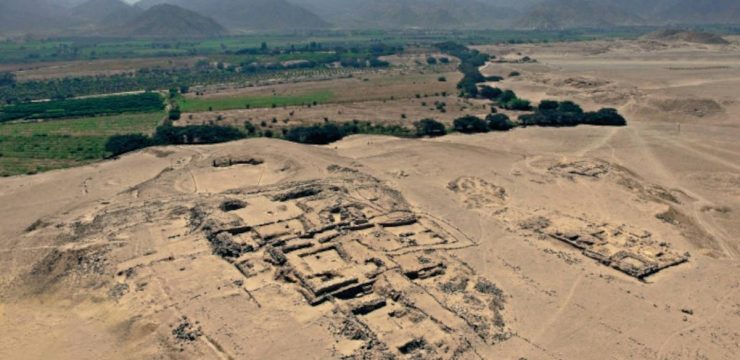Experts have made a groundbreaking discovery in Egypt, unearthing an astonishing 4,000-year-old tomb hidden within the rugged cliffs of the desert. This remarkable find, made by a Spanish research team led by Martina, occurred during an expedition to study the reign of Hatshepsut, the first female ruler of Egypt. The excavation, meticulously documented by Channel 4’s “Secrets of Egypt’s Valley of the Kings,” revealed an untouched burial site that had remained sealed for millennia. The discovery process, however, was fraught with challenges as the team faced harsh desert conditions while working to unveil the secrets hidden within the ancient tomb.
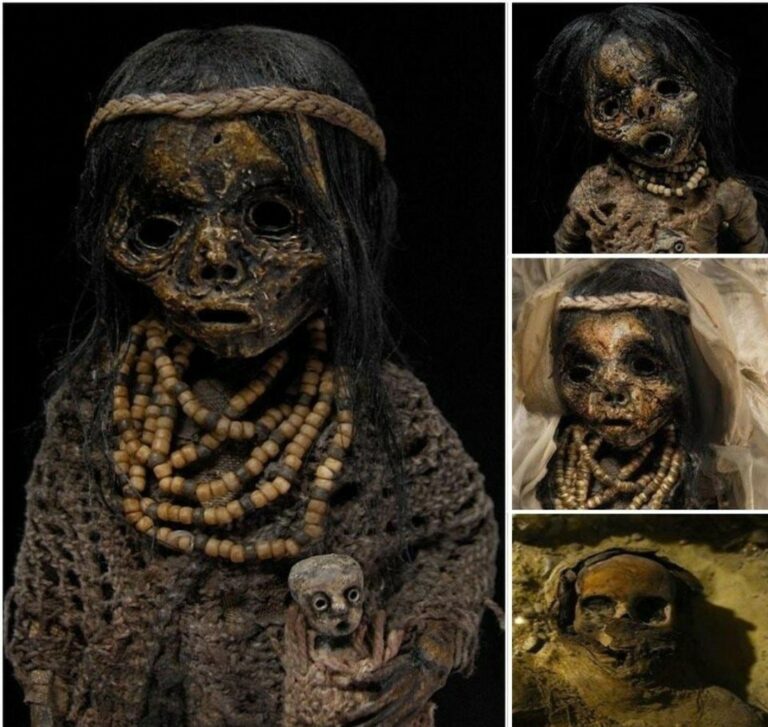
From the outset, the archaeologists encountered significant obstacles. As the narrator described, “Martina’s found a coffin that’s remained sealed for nearly 4,000 years. But first, she has to get to the tomb – a Saharan sandstorm is blowing in from the south. The initial 200-meter journey to the burial site is a battle.” Despite the blinding sand and the relentless winds, the team pressed forward, determined to uncover the mysteries concealed within the ancient burial chamber. The journey to the tomb was not just a test of endurance but a testament to the unwavering dedication of archaeologists committed to preserving history.
Upon finally reaching the tomb, the team carefully removed debris and cleared the entrance before proceeding to the most critical stage—unveiling the coffin that had remained untouched for thousands of years. Every movement was carried out with precision to ensure the preservation of any artifacts and remains within. When they finally pried open the terracotta coffin, revealing its contents for the first time in millennia, Martina and her team were met with an unexpected and eerie sight. “It’s very heavy, but be careful,” she warned. “It looks very scary. It’s like a scary movie—if this mummy moves, I’m going as fast as I can.” Her unease was understandable, as opening an ancient coffin could sometimes reveal shocking, well-preserved remains or unexpected discoveries.
What the team found inside the coffin, however, was not a traditional Egyptian mummy wrapped in linen bandages, as they had anticipated. Instead, it contained a skeletal figure covered in black material. The narrator explained, “The terracotta coffin contains no mummy but a skeleton shrouded in black material. They hope to find out why this person was interred and how they prepared for the afterlife.” This unexpected revelation deepened the mystery surrounding the burial, prompting further analysis to determine the identity of the individual and their significance in ancient Egyptian society.
As the team worked to examine the remains, Dr. Botella made a striking announcement: “I’m sure it’s a woman. The age, no more than 70.” This revelation surprised the archaeologists, as individuals in ancient Egypt rarely lived to such an old age. High infant mortality rates, infectious diseases, and the perils of childbirth often led to significantly lower life expectancy, with most Egyptians not surviving beyond their twenties or thirties. This woman, however, had defied the odds, living far beyond the typical lifespan of her time.
Dr. Bardonova, speaking in 2019, elaborated on the rarity of such longevity in ancient Egypt. “The average life expectancy was about 25, but far more women died during childbirth. When you have someone who is over 70, I don’t want to say I’m surprised, but it’s nice to know—it’s nice to get someone who is really old.” The contrast between this elderly woman and the fate of many historical figures, such as Tutankhamun—who is believed to have died at just 18—highlighted the remarkable nature of this discovery. This woman had not only survived in a world filled with dangers but had also lived long enough to see multiple generations, an extraordinary feat in her time.
The discovery raised several questions. Who was this woman? How did she manage to live so long in an era where survival beyond middle age was rare? What was the significance of the black shroud covering her remains? These questions prompted further scientific investigation into her bones, burial artifacts, and the surrounding tomb structure. By analyzing the burial context and the skeletal remains, experts hoped to uncover more details about her life, social status, and the possible factors that contributed to her extended lifespan.
One hypothesis suggests that this woman may have belonged to the upper echelons of society, possibly a noblewoman or a high priestess, who had access to better nutrition, medical care, and protection from the harsh realities faced by commoners. Ancient Egyptian elites often lived in more favorable conditions compared to the general population, allowing some to reach older ages. The condition of her bones and any signs of past injuries or illnesses could provide further clues about her life and the medical practices of the time.
Additionally, the black material enveloping her remains posed another mystery. In ancient Egyptian burial practices, bodies were often wrapped in linen and treated with resins and oils as part of the mummification process. However, the presence of a dark covering suggested a possible deviation from traditional burial customs. Some experts speculated that it could have been a special funerary wrapping used for individuals of high status or those who had undergone specific religious rites. Others theorized that environmental factors might have altered the original wrappings, resulting in the dark appearance.
The discovery of this woman’s remains not only adds to our understanding of ancient Egyptian funerary practices but also provides valuable insight into the lives of those who lived during Hatshepsut’s reign. As the first female pharaoh of Egypt, Hatshepsut ruled with remarkable influence, overseeing extensive building projects and fostering economic prosperity. This woman’s burial, found within the same era, suggests she may have been connected to the royal court or held a significant position in society.
Further studies, including DNA analysis and isotope testing, could potentially reveal more about her lineage, diet, and health conditions. Such analyses have been instrumental in previous archaeological findings, helping scientists reconstruct the lives of ancient individuals with astonishing accuracy. By examining the composition of her bones and teeth, researchers might determine her geographic origins, dietary habits, and even any medical conditions she suffered from during her lifetime.
Ultimately, this discovery underscores the importance of ongoing archaeological exploration in uncovering the untold stories of the past. Each tomb, artifact, and skeletal remain contributes to a broader understanding of ancient civilizations, shedding light on how people lived, worshipped, and prepared for the afterlife. While many of Egypt’s mysteries remain buried beneath the sands, discoveries like this bring us closer to piecing together the intricate puzzle of history.
As Martina and her team continue their work, their findings serve as a reminder that even after thousands of years, the stories of the past still have the power to captivate and inspire. The remarkable longevity of this ancient woman, her enigmatic burial, and the secrets hidden within her tomb offer a glimpse into a world that once was—a world shaped by faith, tradition, and the enduring resilience of humanity.
